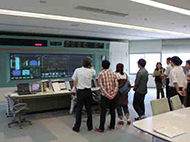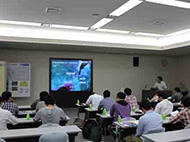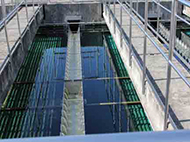Events
Workshop on Water Quality Risk Management in Yodo River Basin
Date: June 22, 2012
Venue: Amagasaki Water Treatment Plant, Amagasaki
Organized by:
Urban Sanitary Engineering Lab and Hanshin Water Supply Authority
Co-organized by:
Global COE Program “Global Center for Education and Research on Human Security Engineering for Asian Megacities”
Number of attendants: 30
Report 211
Outline
The purpose of this site visit activity was to visit the Amagasaki water treatment plant to observe the operations of one of the largest water utilities in Japan. The plant is sprawled across an area of 66,434 m2, and produces 373,000 m3/day of water and supplies it to three cities – Ashiya, Amagasaki and Kobe.
Report
The site visit started with a welcome address by Mr. Nagashio, (Planning Section) of the Amagasaki Water Treatment plant, and Mr. Ohya (Planning Section) who provided information about some of the water quality parameters and standards maintained by the utility. The delegates were then divided into two groups and taken for the tour of the facilities. The treatment is carried in various stages. First, there is an intake chamber, which are fed by three lines from the Yodo River, and backwash water emanating from the treatment plant. The water is then taken into the Floculation chamber to removes larger particles, following which water is taken to the ozonation chamber, where three ozone generators operate under a maximum dosage of 3 mg/L, following which the water is passed through a GAC unit to further purify. In the last stage of the treatment, the water from the GAC unit is passed through rapid filtration units, which use anthracite as the filtration unit. The filtration unit enable much water purification without the need to extend the site. A key feature if this treatment plant, as with other larger plants in Japan, is the real time monitoring of water quality and treatment operations as seen below. After taking a tour of the treatment facility, some official of the treatment plant made a few presentations to share more knowledge and an interesting session of Q&A followed. A number of pertinent issues regarding the operations of the plant were discussed which included details about chemical dosage, microbial contamination, energy use and sustainability of water supply.




